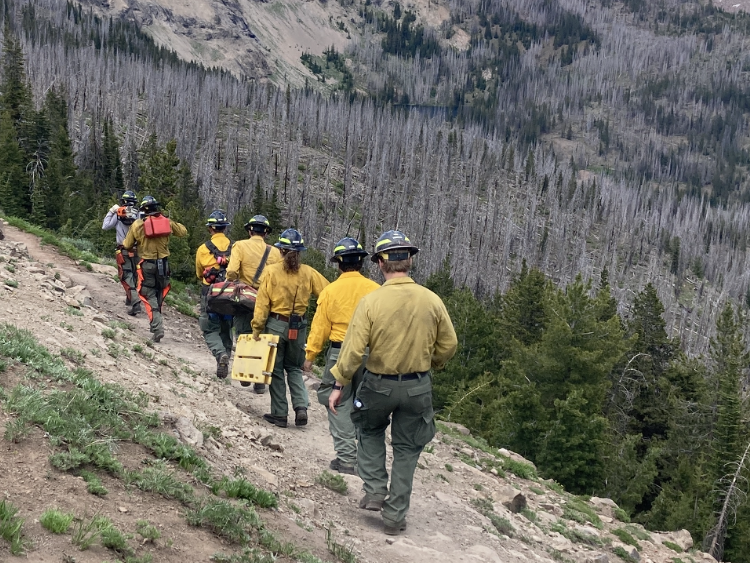Journey: Museum preserves the past
Published 5:00 pm Tuesday, July 24, 2012

- <p>Grant County Historical Museum curator Jayne Primrose and visitor Gene Gwyn discuss vintage record players. Gwyn, who now lives in Southern California, grew up in Prairie City in the 1940s and 50s.</p>
This article was printed in the July 25, 2012 Journey section of the Blue Mountain Eagle.
CANYON CITY Want to really know what Grant County is all about?
Then a visit to the Grant County Historical Museum should be at the top of your to-do list.
For longtime residents, newbies, or visitors just passing through, the Historical Museum offers a glimpse into the times and the lives of the people who pioneered Grant County and called it home.
And as museum curator Jayne Primrose often tells visitors who first step through the door, it all began with the allure of gold back in the 1860s.
The display area in the front lobby/office focuses primarily on the discovery of gold in Canyon Creek in 1862, the ensuing gold rush period, and how it impacted growth in Grant County and Eastern Oregon.
Other sections of the museum are:
The main room: This large area of the museum, just beyond the lobby, houses a variety of displays of general interest everything from school history to guns to rocks to housekeeping items.
Oliver room: Houses items from the Herman Oliver family, pioneers in the Grant County area. It was Oliver who financed construction of the museum.
Music room: An array of old musical items, as well as vintage clothing and photographs.
Native American room: Displays of Native American influences in Grant County, including murals, pictographs and Southwestern artifacts.
Tool room: Ranching items, saddles, tools, and other items that show the living off the land lifestyle predominant in Grant County history.
The museum has undergone a series of energy-efficient upgrades over the past couple of years. Among the improvements:
Spring 2010: Nine solar panels installed.
August 2010: Five windows replaced with double-paned ones.
Jan.-Feb. 2011: Two HVAC heating and air-conditioning units installed, which allow the artifacts as well as staff and visitors to be kept at a comfortable 70 degrees, day and night.
Summer 2011: Several unused windows with temporary coverings, were permanently blocked and finished off. Cedar board-and-batten siding was added to the entire exterior.
September 2011: New insulation in the attic, and all new energy-efficient lighting has been installed throughout the interior, and outside, too, with new porch lights at the entry.
All the upgrades have dramatically reduced the museums heating bill, as hoped, but also gave the 60-year-old structure a fresh new look.
It looks better than ever, said Primrose, who has been museum curator for 14 years.
The building itself has its own history tale.
Originally, the museum artifacts were the belongings of Charles W. Brown, who for 30 years had housed his collection of historical antiques, Indian relics and curios a couple of blocks away at his Washington Street service station.
In May 1953, the collection was transferred to the newly constructed and fire-safe museum. It was a moved of mixed emotions, esp. for longtime residents.
Old-timers viewed sadly the transfer of Browns collection from the old to the new setting by volunteer workers.
Almost everyone agreed that the atmosphere of the old service station where fan belts mingled with ancient shotguns and cans of motor oil with stuffed deer heads could never be duplicated. But no one denied that the collection, to be preserved, needed a larger, fire-resistant home. (Blue Mountain Eagle, May 29, 1953.)
The project to create a museum was four years in the making, and sparked the birth of the nonprofit Grant County Historical Society. After disputes were settled as to where the museum should be located John Day or Canyon City the fund-raising began.
It was Herman Oliver, a Historical Society board member, who sped things up by financing the construction. The Historical Society agreed to purchase the building from him, as soon as it was able, for the cost of the construction.
The official opening of the Grant County Historical Museum was held on June 6, 1953, to coincide with that years 62 Days celebration in Canyon City.
The original building was smaller than the one visitors see today, with sections added over the years as more artifacts were donated.
Primrose said that all the photos and artifacts have been inventoried on the computer, with the archiving of ephemera, or printed material, yet to be done.
Looking for photos on a specific topic for example, the Grant County Fair or Dayville in the 1920s? The museum has an extensive catalog of photographs, filed with as much identifying information as is known, and kept in fireproof cabinets. Visitors can view photos onsite at the museum, or Primrose can make copies for $1 each. For anyone needing research on a topic, the charge is $10 per hour.
As curator, Primrose takes great pride in being the caretaker of the countys history, now and into the future.
I just want this to be known as a really good history museum, Primrose said.
The Grant County Historical Museum can be reached at 541-575-0362.









